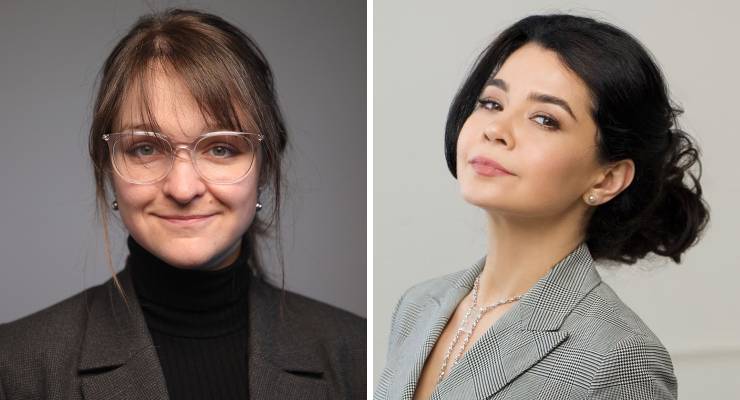
“There is nothing scarier than war — painful and tragic,” said Sevgil Musaieva, editor-in-chief of Ukraine’s leading news site Ukrainska Pravda, at a recent panel. “But it’s scarier when it is in your own country and you have to cover it on a daily basis.”
War is the ultimate disrupter. In Ukraine right now, it’s disrupting the idea of what a media ecosystem can look like, particularly outside the Anglophone centres of London and New York. It’s propelling Ukraine over the era of oligarch-owned, ad-supported, clickbait tabloidism that lies like a dead hand over our own mass media.
While we’re twittering about 20th-century concepts of great power politics, Ukraine’s 21st-century media is emerging out of opposition to the country’s post-Soviet history of Russian domination, authoritarianism and corruption. There’s an assertion of Ukrainian national identity: young, feminised, diverse, digitally distributed, and focused on accountability and democracy.
Here are a few examples: Ukrainska Pravda, established in 2000, as the leading Ukrainian language site; the English-language Kyiv Independent, launched in repudiation of oligarch ownership just three months before last year’s invasion; digital broadcaster Hromadske, with almost 1 million YouTube subscribers; the Media Growth Agency (ABO), which has launched a publishing platform that supports about 65 local media, including 15 in what Ukrainians call “temporarily occupied” regions.
It’s a tough environment. Yesterday, on World Press Freedom Day, the International Press Institute’s War in Ukraine Press Freedom Tracker reported nearly 1000 attacks on media linked to the Russia-Ukraine war since last year’s invasion. Ten journalists have been killed.
The media is grappling with war fatigue, the rippling shock of war crimes and a polarising divide between those who stayed (or were forced to stay) in Ukraine and those 8 million — mainly women and children — who left.
Musaieva’s Ukrainska Pravda was founded as a Ukrainian-language digital news site in 2000 (the same year Crikey was launched). Its founder, television and radio host Georgiy Gongadze, disappeared within months and was later found dead. In 2016, journalist Pavel Sheremet was killed in a car bombing.
After Ukrainske Pravda reported the February 24 invasion (at 4.57am, says Musaieva), it became the go-to news source: “In those first months, we were second only to Google in visits with 7 million people every day.” It launched an English-language version shortly after.
She says it has continued to focus on corruption, with its reporting resulting in the dismissal of senior figures in the Zelenskyy government.
War fatigue is challenging: “We have to find new ways of talking about war, particularly about war crimes.” The site has launched a podcast series with the dark, punning title War-Life Balance.
The English-language Kyiv Independent finds its audience largely outside Ukraine, particularly in North America and Europe. It’s about 90% of its readership, says CEO Daryna Shevchenko.
“Lots of people have just found out that Ukraine exists,” she says. “We provide context about Ukraine’s history, Ukraine’s identity.” It is continuing to experiment with how to tell that story, pivoting to explainers, including a report on the 19,000 children believed to have been deported by Russia.
While it’s hard for a Ukrainian audience to check out, Shevchenko says, it’s easier for its external audience: “Every story is a heartbreaking story.” She stresses: “We won’t sugar-coat what the government does.”
Lera Lauda from ABO says local digital voices are providing important on-the-ground information for towns disrupted by the war, linking to government and NGO services and connecting communities otherwise scattered across the country and the world.
They launched and shared the Ukrainian Memorial Platform to track those killed as a result of the war.
Before the invasion, Ukrainska Pravda was largely ad-supported. It’s since diversified through grants and reader support. The Kyiv Independent relies on funds from a 10,000-strong membership. Hromadske draws on YouTube funding. ABO is largely reliant on grants and philanthropy.
While Ukraine’s independent media have carved out a strong social and political role, it’s not clear what the business model will be after the war. “Media is a business, after all,” says Shevchenko. “It’s just not a particularly good one.”








What are the chances this “English” Ukraine media is mostly funded by the US?
Only 1,000%. Plus….
Though far less well-known and certainly less popular, the World Socialist Web Site – of the Fourth International – does a very good job in raising domestic Ukrainian issues certainly not raised elsewhere.
Such as:
The 1619 Project and the New York Times’ promotion of the racialist ideology of Ukrainian nationalism
The narrative of the “unprovoked war” in Ukraine falls apart
Ideological opponents of the Ukrainian government are waiting for prison or death
The crimes of the Banderovites against the Ukrainian people: Notes by a Ukrainian Trotskyist
Ukrainian parliament approves anti-Russian law to “decolonize” place names
Ukrainian government spends millions on monuments and streets to honor Nazi collaborators and neofascists
Inevitably, though, the intensely politicised environment leaves very little scope for public absorption of such contrary exposes, especially as domestic and foreign opinion is likely to be divided on such matters. More than a few American republicans would heartily endorse such measures, as would a good part of American and western media. Certainly ours does.
Recall that in two World Wars, Australian journalism was heavily censored. Official commentary was hugely reinforced by official support plus official repression of dissent.
While _who_ is twittering about 20th-century concepts?
Nothing in Warren’s article establishes the bona fides of these Ukranian outlets as objective. Its little more than an unsubstantiated plug.
Their importance now, including Russian and regional journalists & media, is their on the ground knowledge versus much analytical bypasses we see in far away Anglosphere media, especially by pro Putin geo-political experts and media grifters…..being easily misled.